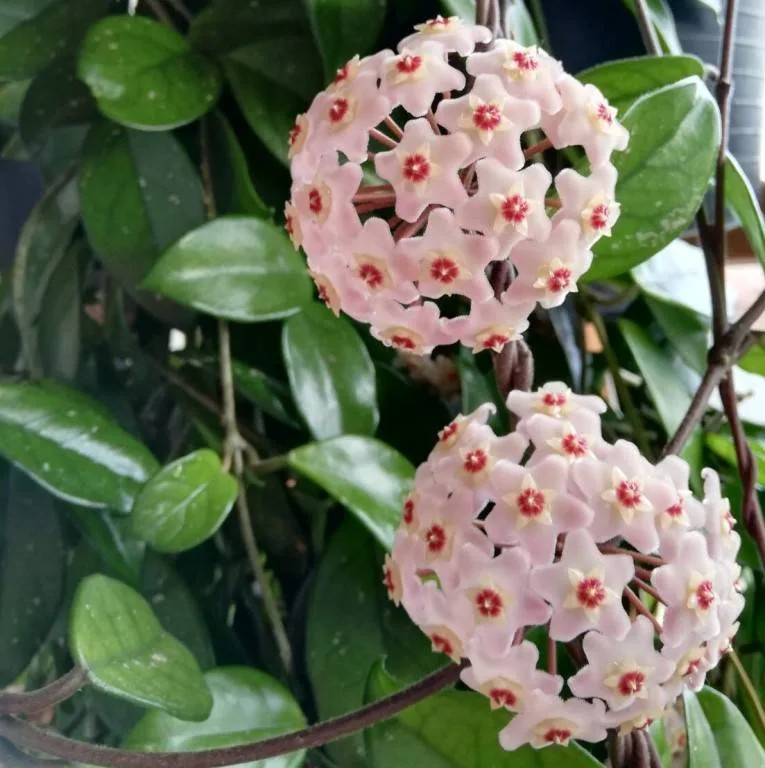index
Presentation
The Wax Flower (Hoya carnosa) is a succulent perennial plant known for its charming, waxy flowers, which exude a sweet, soft scent. Native to tropical regions of Asia and Australia, the Wax Flower is prized for its ability to thrive indoors and outdoors, adding a touch of exoticism and elegance to gardens, balconies and well-lit indoor spaces.
The Wax Flower is a medium-sized plant that can reach between 30 and 100 centimeters in height, with shiny, waxy leaves that give the plant a lush, healthy appearance. Its flowers vary in dazzling colors, including shades of white, pink and red, and usually bloom in spring and summer. In addition to its aesthetic beauty, the Wax Flower is valued for its ability to purify the air and for its symbolic meaning of love and devotion, making it a popular choice for gifts and interior decoration.
The Meaning of the Wax Flower
The Wax Flower is often associated with meanings of love, happiness and devotion. Its delicate, aromatic flowers symbolize affection and appreciation, making it a popular choice for gifts on special occasions. In addition, the Wax Flower’s ability to flourish in a variety of environments and weather conditions represents resilience and strength, serving as a reminder to remain strong and vibrant even in the face of challenges and adversity. Its soft, sweet scent also evokes feelings of tenderness and tranquillity, bringing a serene and welcoming atmosphere to any space where it is grown.
| Common Name | Wax Flower |
| Botanical Name | Hoya carnosa |
| Family | Asclepiadaceae (Apocynaceae) |
| Type of Plant | Perennial succulent plant |
| Adult size | 30-100 cm high |
| Solar Exhibition | Indirect to bright light |
| Soil Type | Well drained |
| Soil pH | Slightly acidic to neutral (6.0-7.0) |
| Flowering Season | Spring to summer |
| Color of Flowers | Various colors, including white, pink and red |
| Native Area | Tropical regions of Asia and Australia |
| Toxicity | Slightly toxic if swallowed; may cause irritation |
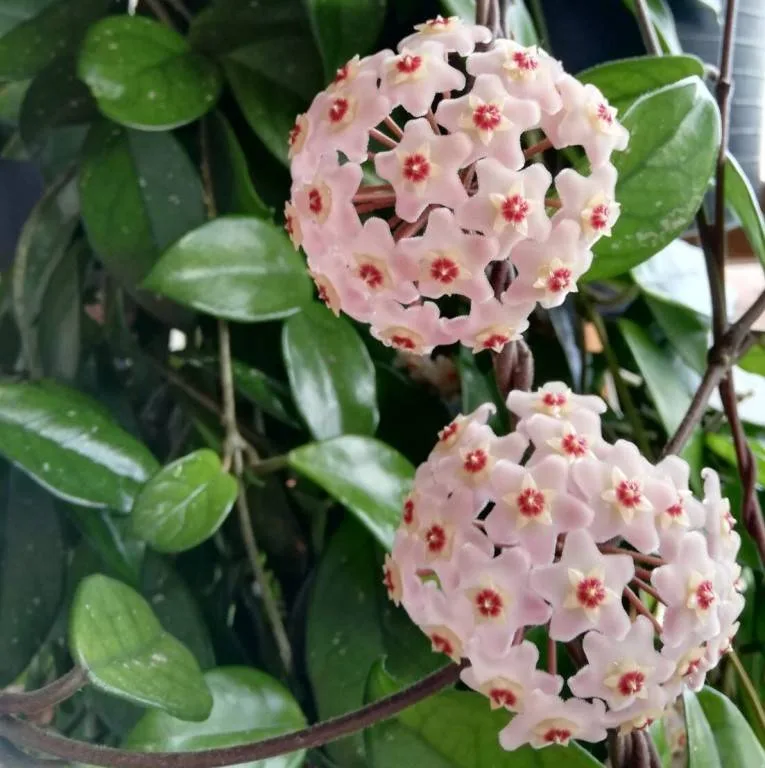
How to Care for Wax Flowers
Light
The Wax Flower thrives best in places with bright, indirect light. Avoid exposing the plant to intense direct sunlight, as this can result in burns on the leaves. Position it near windows that receive diffused light or use light curtains to filter out the intensity of the sunlight.
Soil
To ensure healthy growth of the Wax Flower, use well-drained soil rich in organic matter. Avoid overly moist soil, as this can lead to root rot. A mixture of substrate for succulents and cacti with perlite or sand can provide adequate drainage.
Water
Water the Wax Flower moderately, allowing the soil to dry out between waterings. Avoid soaking the soil, as excessive water accumulation can cause root rot problems. During the colder months, reduce the frequency of watering, allowing the plant to enter a period of rest.
Temperature and humidity
Keep the Wax Flower at a moderate room temperature, ideally between 18°C and 24°C. Avoid exposure to cold drafts and extreme temperature fluctuations. An average relative humidity is usually sufficient, but the plant appreciates a slightly humid environment, especially during the warmer months.
Fertilization
Fertilize the Wax Flower during spring and summer with a balanced, water-soluble fertilizer, following the manufacturer’s instructions. Avoid overfeeding the plant, as this can result in root burn. Reduce the frequency of fertilization during the colder months or when the plant is resting.
What Are the Types of Wax Flowers?
The Wax Flower (Hoya) is a diverse plant with a variety of species and cultivars. Below are some of the popular types of wax flower:
- Hoya Carnosa: The classic variety of Flor de Cera, known for its waxed leaves and fragrant flowers in shades of pink, white and red.
- Hoya Kerrii: Also called “Hoya Heart”, this variety has heart-shaped leaves and is often grown as an indoor plant due to its charming appearance.
- Hoya Australis: Originally from Australia, this variety of Wax Flower produces clusters of fragrant white flowers, adding a touch of elegance to any garden.
- Hoya Pubicalyx: Known for its star-shaped flowers and elongated, glossy leaves, this variety of Wax Flower is appreciated for its lush appearance and showy blooms.
- Hoya Lacunosa: This variety is prized for its fragrant star-shaped flowers and leaves with wavy edges, adding a touch of delicacy and exoticism to any space.
- Hoya Bella: With its delicate star-shaped flowers and lush foliage, this variety is popular for its ability to flourish indoors and outdoors, adding beauty and charm to gardens and interiors.
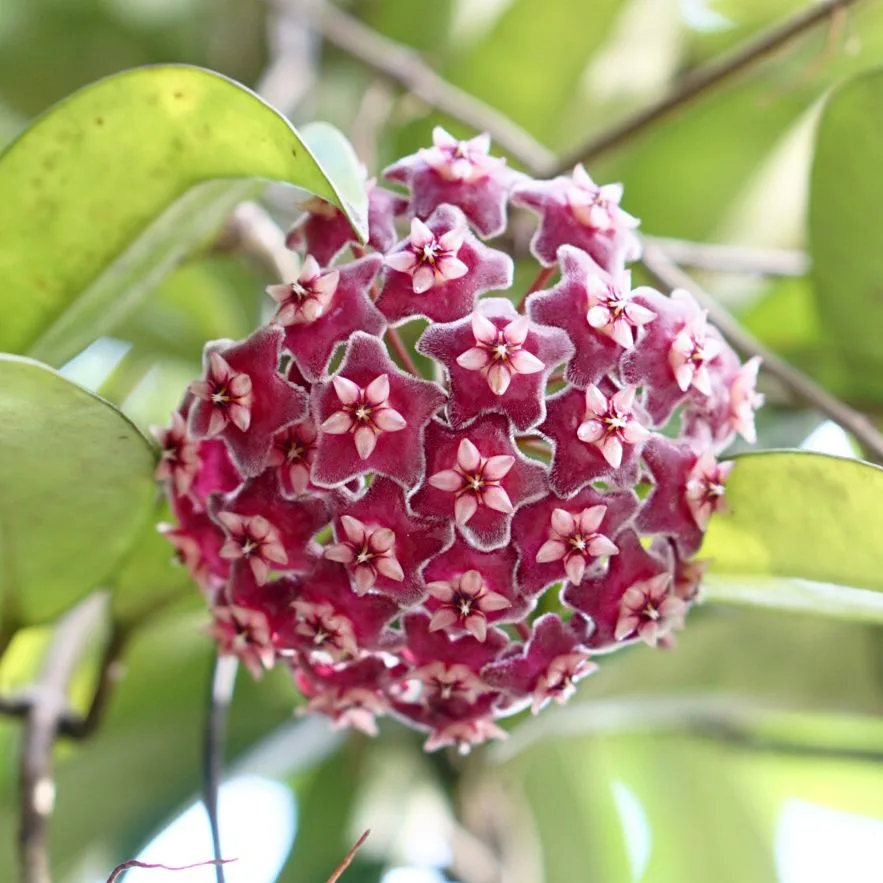
How to Prune Wax Flowers: Importance and Techniques
Pruning the Wax Flower is an important practice to promote healthy growth and stimulate exuberant flowering. Remove wilted, dry or damaged stems to direct the plant’s energy towards the development of new buds and flowers. In addition, regular pruning helps to control the size of the plant and keep it looking lush and well cared for. Use sharp, clean pruning shears to avoid unnecessary damage and cut close to the nodes to encourage the growth of new shoots.
How to Make Wax Flower Cuttings
The Wax Flower can be propagated by stem or leaf cuttings. Choose healthy, vigorous cuttings, remove the lower leaves and plant in a well-drained substrate. Keep the cuttings in a warm and slightly humid environment, protecting them from direct sunlight until they take root. Water sparingly, avoiding waterlogging the soil. Over time, the cuttings will root and develop into robust seedlings.
Step by Step on How to Plant the Wax
When planting the Wax Flower, choose a pot with good drainage and fill it with a suitable substrate, such as a mixture of soil for succulents and cacti. Position the plant in the center of the pot, adding substrate around the roots and pressing lightly to secure. Water gently to settle the soil and stimulate rooting. Place the plant in a spot with indirect light and moderate temperatures, avoiding direct sunlight and cold drafts.
Most Common Pests and Diseases
The Wax Flower can be susceptible to some common pests and diseases, including:
- Bugs: Small insects that feed on the sap of the plant, causing spots and general weakening.
- Mites: They can cause yellowing and spots on the leaves, damaging the plant’s healthy growth.
- Mold and Fungus: Excessive humidity can lead to the development of mold and fungus on leaves and stems.
Common Problems and Their Solutions
When you identify signs of infestation or disease, it is essential to act quickly to avoid serious damage to the Wax Flower. Remove visible pests by hand and use organic control solutions such as neem oils or insecticidal soap. For problems related to humidity, make sure the plant is receiving adequate ventilation and reduce the frequency of watering to prevent the development of mold and fungi.
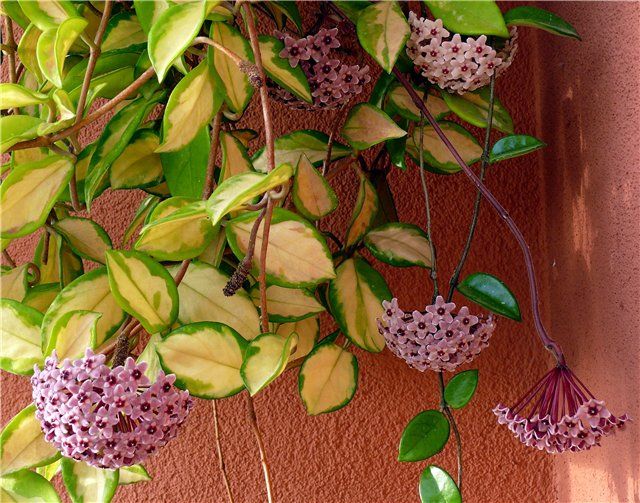
Advanced Care and Maintenance Tips
As well as regularly monitoring for pests and diseases, advanced care for the Wax Flower includes controlling the humidity of the soil, ensuring that the substrate doesn’t become waterlogged. In addition, provide balanced fertilization during the growing season and provide an environment with good air circulation to reduce the likelihood of fungus-related problems. Keeping the plant in a clean, healthy environment and ensuring consistent maintenance can help promote the Wax Flower’s overall well-being.
Curiosities and Myths
The Wax Flower is a fascinating plant that arouses interest and curiosity in gardening enthusiasts and plant lovers. Here are some interesting facts and myths related to this beautiful flower:
- Relaxing Aroma: The soft, sweet aroma of Wax Flower flowers is believed to have relaxing and therapeutic properties, helping to relieve stress and promote a feeling of calm and tranquillity.
- Longevity of Flowers: Wax Flower flowers have a long shelf life, often lasting weeks or even months, making them a popular choice for long-lasting floral arrangements and decorations.
- Symbol of Love and Devotion: In many cultures, the Wax Flower is considered a symbol of love and devotion, representing lasting bonds and deep affection between friends, family and loved ones.
- Variety of Colors and Shapes: With a wide variety of colors and flower shapes, the Wax Flower is known for its impressive visual diversity, making it a versatile option for different styles of floral arrangements and garden landscapes.
- Myths of Protection: In some folk traditions, the Wax Flower is associated with beliefs of protection and good luck, being planted in gardens and houses as an amulet against negative energies and unwanted influences.
- Adapting to Different Environments: The Wax Flower’s ability to adapt to a variety of environments and growing conditions makes it a popular choice for gardeners of all levels of experience, adding a touch of beauty and elegance to any green space.
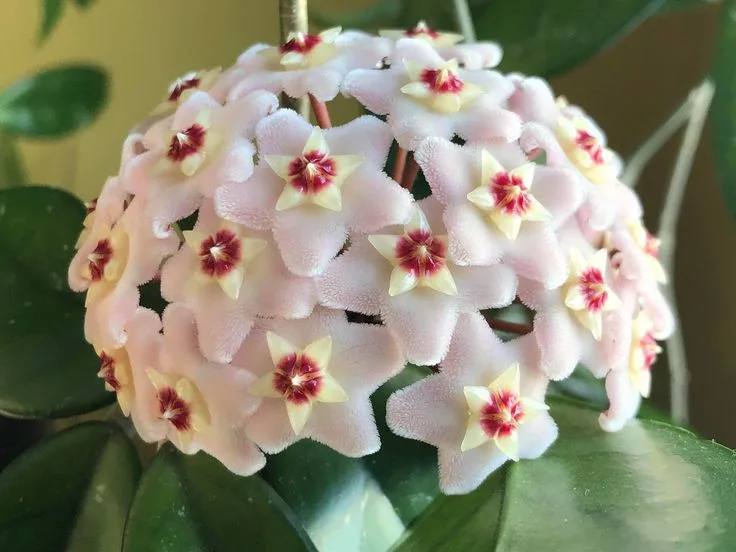
Conclusion
The Wax Flower is much more than an ornamental plant with lush, fragrant flowers. Its ability to thrive in a variety of environments, its long flower life and its deep symbolism of love and devotion make it a valuable addition to any green space. With a variety of types and a rich history of curiosities and myths, the Wax Flower continues to delight plant lovers and gardening enthusiasts the world over.
In terms of care, ensuring adequate exposure to light, well-drained soil and moderate watering are essential to promote the healthy growth of this plant. In addition, keeping an eye out for possible pests and diseases and adopting preventative control measures can help keep the Wax Flower vibrant and exuberant over time. With patience and dedication, this exotic and elegant plant can certainly bring beauty and tranquillity to any indoor or outdoor environment in which it is grown.
Frequently Asked Questions
Which month does the wax flower bloom?
The wax flower usually blooms during spring and summer.
What is wax flower used for?
The wax flower is mainly used as an ornamental plant due to its beauty and pleasant aroma. In addition, its decorative properties make it popular in floral arrangements and interior decorations.
Where to put the wax flower?
The wax flower should be placed in areas that receive bright but indirect light, avoiding direct exposure to the sun. It is ideal for well-lit indoor environments and can also be grown in protected outdoor areas.
What should I do to care for the wax flower?
Some important precautions include:
1. Ensure adequate indirect light.
2. Water moderately and allow the soil to dry out between waterings.
3. Use well-drained soil rich in organic matter.
4. Keep the plant at a moderate room temperature and with balanced humidity.
5. Carry out regular pruning to encourage healthy growth.
6. Regularly monitor the presence of pests and adopt preventive control measures if necessary.


